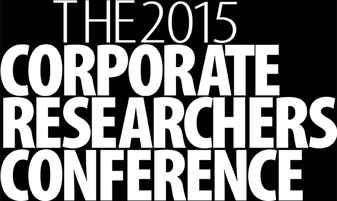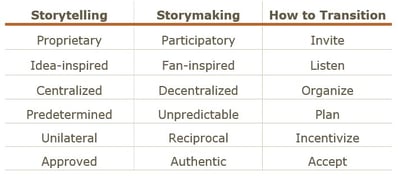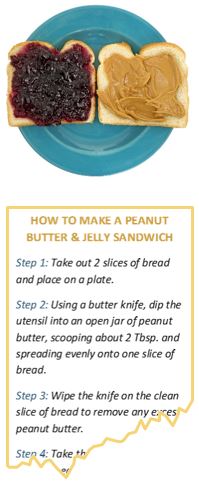 The traditional military definition of a "wingman" is the second pilot who flies behind and off the right wing of the lead aircraft. The wingman protects the lead by watching his/her back. As I reflected on this year’s MRA Corporate Researchers Conference (CRC) in St. Louis, I thought about my experiences with the wingmen and wingwomen of Chief Marketing Officers at Fortune 500 companies.
The traditional military definition of a "wingman" is the second pilot who flies behind and off the right wing of the lead aircraft. The wingman protects the lead by watching his/her back. As I reflected on this year’s MRA Corporate Researchers Conference (CRC) in St. Louis, I thought about my experiences with the wingmen and wingwomen of Chief Marketing Officers at Fortune 500 companies.
Here’s what separates wingmen and wingwomen from the rest of the pack:
- They test new stuff ALL THE TIME. Jeffrey Henning moderated a panel with Samsung’s Manvir Kalsi, Chico’s Ivy Boehm, and Lowe’s Celia Van Wickel, asking them to talk about techniques that have disappointed them. They primarily talked about emerging technologies, specifically about vendors who overpromised with facial coding in neuroscience and thematic roll ups that “create themselves” in text analytics. They discussed their “lead pilots” and their companies’ “formation” not having enough time for overly “mathy” insights. They also talked about how they’ve brought dynamic deliverables to their organizations in an attempt to reduce the PowerPoint clutter. Chico’s Ivy Boehm mentioned her quest to shift from 60 page “boring PowerPoints” (her words) to just 20 solid slides through combining information and drawing deeper conclusions. Manvir, Ivy, and Celia also discussed the challenges each of them faces as they make trade-offs in an effort to try new things—even though they know that sometimes all they need are some well-moderated traditional focus groups and a straight up, well-written quantitative survey. This panel proved that no matter the challenge, wingmen are always improving their game.
- They play around with working at Mach speed and at a normal pace. Microsoft’s Barry Jennings talked about the company’s Rapid Deployment Programs, which elicit feedback from customers at the later stages of the product development cycle. Successful wingmen are able to adjust and change course quickly—they can’t just head for the horizon. This is the key challenge: knowing when and where to get insights quickly at a lesser cost. At Microsoft, the process is clearly defined: ideation, iteration, validation, repeat. This process helps some concepts fail faster and helps others go to market more quickly. While Microsoft does loads of very methodical research, it’s also pushing itself to be fast and impactful vs perfect. Their program integrates activities, social and independent, moving from ideation to quant to qual and back. They collect feedback across any device and operating system, and they launch research in a day, share results, integrate historic data, and iterate.
- They begin with the end in mind and quantify their impact. Terrific researchers understand the business impacts of their research. Roxanne Gray, VP of Research for Wells Fargo, described the diverse household research that supports their “together, we’ll go far” promise. Customer insights played prominently for Wells Fargo as it launched its most recent campaign about the company’s commitment to helping diverse households talk about their finances. Grab a box of tissues, and see more about how Wells Fargo illustrated its 25-year commitment to people with diverse backgrounds. The impact? Roxanne’s research supported confident decision-making that quadrupled earned media. She was energized by the research itself, the executive decisions her stakeholders would make from the research, and the easy-to-digest delivery of insights that she presented as a story, and it showed.
- They love what they do, and they stay curious. Wingmen and wingwomen venture out to conferences to present, network, and listen to others. This deep passion for research, learning, and sharing is what keeps us sharp and focused at our organizations. At the best conferences, such as MRA’s CRC, the sheer number of wingmen and the quality of presentations (not to mention the bacon at breakfast) is incredible. If your position as a wingman isn’t rewarded with an adequate budget for this type of travel, have no fear. . . you can check out your local MRA chapter, attend online webinars, talk and listen with your global research peers face-to-face, and connect on Twitter and LinkedIn.
Let’s keep a line of sight on our lead pilots, the horizon, our formation, and let’s go!
Julie blogs for GreenBook, ResearchAccess, and CMB. She’s an inspired participant, amplifier, socializer, and spotter in the twitter #mrx community, so talk research with her @julie1research.
Our monthly eZine will keep you up-to-date with the latest at CMB and in the market research community!





 ow do you make a peanut butter and jelly sandwich? It’s a simple task, but using only words to explain the process makes it seem far more complex. Images are easier to interpret and comprehend quickly. Show an image of a PB&J, rather than detailed instructions, to a sandwich-making rookie, and you’ll get your sandwich a lot quicker.The human brain processes visual images 60,000 times faster than any other type of stimuli. The use of images is a powerful and efficient tool to help convey your message. In today’s digital world, not only are people using visual communication more than ever, they’re also communicating better.
ow do you make a peanut butter and jelly sandwich? It’s a simple task, but using only words to explain the process makes it seem far more complex. Images are easier to interpret and comprehend quickly. Show an image of a PB&J, rather than detailed instructions, to a sandwich-making rookie, and you’ll get your sandwich a lot quicker.The human brain processes visual images 60,000 times faster than any other type of stimuli. The use of images is a powerful and efficient tool to help convey your message. In today’s digital world, not only are people using visual communication more than ever, they’re also communicating better. Some visual methods are designed for impact, and are more likely to be remembered and shared, which is something to keep in mind when considering socialization within an organization. Using an infographic or interactive presentation to report results is 30 times more likely to be read and absorbed than plain text. These powerful mediums can convey meaningful results faster and more effectively than a data-heavy report. They strike an attractive balance between content types while telling a compelling and relevant story. Infographics, in particular, can be very engaging, and their versatility makes them a value-add for any industry’s research results.
Some visual methods are designed for impact, and are more likely to be remembered and shared, which is something to keep in mind when considering socialization within an organization. Using an infographic or interactive presentation to report results is 30 times more likely to be read and absorbed than plain text. These powerful mediums can convey meaningful results faster and more effectively than a data-heavy report. They strike an attractive balance between content types while telling a compelling and relevant story. Infographics, in particular, can be very engaging, and their versatility makes them a value-add for any industry’s research results.
 It’s both an exciting and challenging time to be a researcher. Exciting because we can collect data at speeds our predecessors could only dream about and challenging because we must help our partners stay nimble enough to really benefit from this data deluge. So, how do we help our clients reap the rewards of Big Data without drowning in it?
It’s both an exciting and challenging time to be a researcher. Exciting because we can collect data at speeds our predecessors could only dream about and challenging because we must help our partners stay nimble enough to really benefit from this data deluge. So, how do we help our clients reap the rewards of Big Data without drowning in it?  Sitting in my cozy Boston office, sipping coffee, I’m suddenly transported to Washington State’s Cascade Mountain Range, soaring above the mile-high Cowboy Mountain and scanning Tunnel Creek, a popular, snow-powdered trail and the site of the tragic 2012 Stevens Pass avalanche.This is the genius of the graphics that accompany “
Sitting in my cozy Boston office, sipping coffee, I’m suddenly transported to Washington State’s Cascade Mountain Range, soaring above the mile-high Cowboy Mountain and scanning Tunnel Creek, a popular, snow-powdered trail and the site of the tragic 2012 Stevens Pass avalanche.This is the genius of the graphics that accompany “